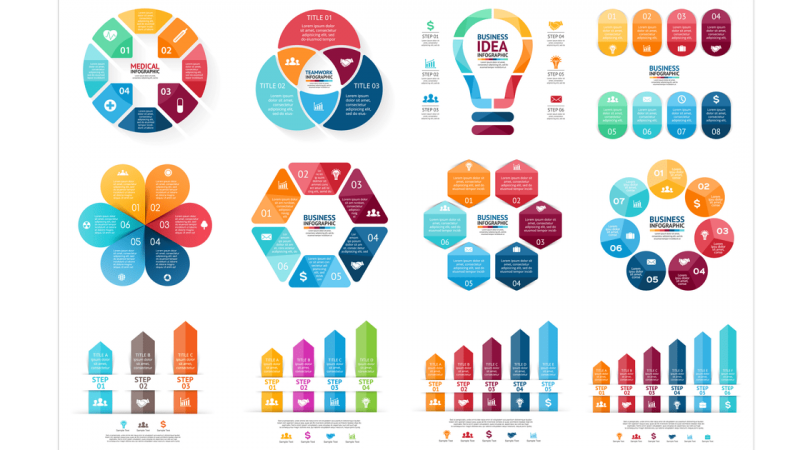10 Editing Tips that Transform Your Content into Persuasive Works of Art

Many webmasters believe content marketing is fairly simple, but that’s just because they don’t understand all the details surrounding this powerful niche. All they see are stats like the one showing that content creation costs 62% less than traditional marketing while generating over three times as many leads.
The numbers are indeed outstanding, but it takes a genuine content creation guru to achieve such sensational goals. Keep in mind that there are over 1.7 billion websites on the Internet and each one has something to offer to the readers.
In such circumstances, it takes an excellent piece of post to attract the target audience. Our job is to help you with that, so keep reading to learn 10 editing tips that will transform your content into persuasive works of art.
1. Style Depends on Your Goals and Target Audiences
Before you begin writing, make sure to think about the style. Some authors suggest using the same form of writing all the time, but it can be very counterproductive if you don’t take into account professional goals and the expectations of the target audience.
For example, if your goal is to inform readers and provide them with basic information, then you should be very direct and state your ideas concisely. On the other hand, authors whose goal is to tell a story or educate readers can be a little more descriptive and do some freestyle writing.
The target audience is another important factor because you need to answer their demands. If the average website visitor is young and cheerful, you can use humor and everyday language to express your thoughts. But if the audience consists of serious business executives, it is better to keep the style professional and data-driven.
2. Create Mind-Boggling Headlines
First impressions are usually the most important, so you should try to come up with a mind-boggling headline every time you write a new post. That way, you will persuade website visitors to keep engaging and continue reading the whole post.
There are many interesting tricks you can use to design appealing titles. Some of the common solutions include humorous statements, emojis, numbers, questions, and similar. All these techniques are supposed to evoke curiosity and convince people to take a closer look.
If you are not sure how to write a compelling title for a new post, we recommend you to check out CoSchedule Headline Analyzer. It’s a very useful tool that scans a headline, analyzes it from many points of view, and gives you the overall score along with tips on how to improve the title.
3. Write for Skimmers
Do you know that a typical user spends only 15 seconds on a single webpage and reads about 20% of its content? They skim articles and look for important details only. It’s just the way things work in the online universe because modern users are impatient and unwilling to spend a lot of time consuming website content.
What can you do to adapt? The answer is simple – you need to write for skimmers. Here are a few suggestions on how to do it properly:
- Use headings and subheadings to divide posts into specific segments.
- Bold the most relevant information.
- Create lists for effortless skimming.
- Use a lot of whitespaces to distinguish between different parts of the post.
- Use bright colors to emphasize the fundamentals.
4. Focus on Important Information Instantly
The main rule of online writing is to focus on important details instantly. You probably figured out by now that Internet users don’t want to bother with anyone’s content too long, so you better present the most relevant conclusions right from the beginning of the post.
This basically means that content creators use the same writing techniques as journalists. Namely, journalists are trying to answer the so-called 5W+H questions immediately:
- Who did what, where, when, why, and how?
If you follow the same pattern, you’ll make sure that the audience reads the fundamentals. In other words, you don’t have to worry about them missing out on critical information or failing to understand the purpose of the content.
5. Don’t Forget Keywords
This one goes without saying, but we just couldn’t neglect keywords in the whole content creation discussion. More than 90%of the entire online traffic is generated through search engines, which means that you have to identify and use keywords throughout the post.
It is the only way to maximize online visibility and help both the audience and search engines to find your content. In case you’re not using it already, we advise you to check out Google Keyword Planner. It’s a free tool that will help you to discover the best search terms and phrases for each article.
John Trogdon, a blogger at the assignment writing service uk, says you should also try to find as many longtail keywords as possible: “Such phrases give additional context to the content and enable search engines to understand and index new posts even quicker and more precisely.”
6. Avoid Common Content Writing Mistakes
Another thing you should bear in mind is to avoid common content writing mistakes. These are small but very influential features that make web posts underperforming, less interesting, and harder to consume.
The list of common content creation blunders is very long, but we selected the details that too many authors repeat too frequently. Here they are:
- Passive voice: You want the content to be actionable, so try to avoid passive voice.
- Long sentences or paragraphs: Longer lines of text look complex and so they chase the readers away.
- Jargon and buzzwords: A typical user is not eager to read heavy jargon and industry buzzwords. Use simple vocabulary and everyday language instead.
7. Take Advantage of Power Words
Experienced content designers understand how important power words are for the success of their stories and so they use them frequently in every post. A power word is a word that evokes an emotional response, positive or negative, in the target audience, leading to the desired outcome.
Even if you weren’t familiar with the concept, you must’ve noticed it by now. How come? Well, you get to see power words on almost all websites. Some of the popular choices include:
- You
- Free
- New
- Because
- Amazing
- Instantly
- Now
- Secret
- Help
These and many other expressions can make your content more actionable, so feel free to explore the list of power words more thoroughly.
8. Add Visual Effects to Your Posts
You can be the most talented content writer in your niche, but it won’t change the fact that modern users want to see something more than plain text. Adding visual elements to the article, you will make the content much more appealing and easier to consume.
After all, studies reveal that blog posts with images earn over 90% more views than those without and visuals. This is why you should always use a photo or two to make new articles more compelling.
But you can do even more with other visual elements. The Internet is filled with videos, GIFs, animations, and similar formats that look even more dynamic, so don’t be afraid of adding them to your posts as well.
9. Always Include a CTA to Your Posts
What happens when readers finish reading a post? They either leave the website or follow your recommendation to switch to another activity. If you want to prevent the former from happening, you better include a call to action (CTA) to your articles.
A CTA can be anything you want, but let it drive engagement in a way that suits your business objectives. For instance, you might recommend people to subscribe to email newsletters, read another article on your website, sign up for a free trial, or even purchase a product or service.
In each case, a CTA must be relevant to the content and come as a natural extension of your post.
10. Proofread and Edit Articles
The biggest content creation mistake you can make is to publish a new piece without proofreading and editing. It can make your business look totally unprofessional, so don’t forget to check the text before going public.
You can do it manually or ask a colleague to do it for you. But a much simpler solution is to use digital tools to analyze your prose. Some of the most popular proofreading platforms are Grammarly and Hemingway, but you should check out other services to try and find the one that perfectly matches your writing style and needs.
Conclusion
Content creation is a super-successful marketing concept, but it can only get you so far in case you don’t stick to the advanced writing principles. In this post, we discussed 10 editing tips that could transform your content into persuasive works of art. Remember our tips and make sure to use them – it will help you to maximize the effect of your posts!
AUTHOR BIO
James Murphy is a full-time app developer and a part-time content creator from New York. Although being an IT specialist, James writes about a wide range of other topics such as social media and digital marketing. James is the father of two lovely toddlers and a dedicated supporter of the New York Yankees.



